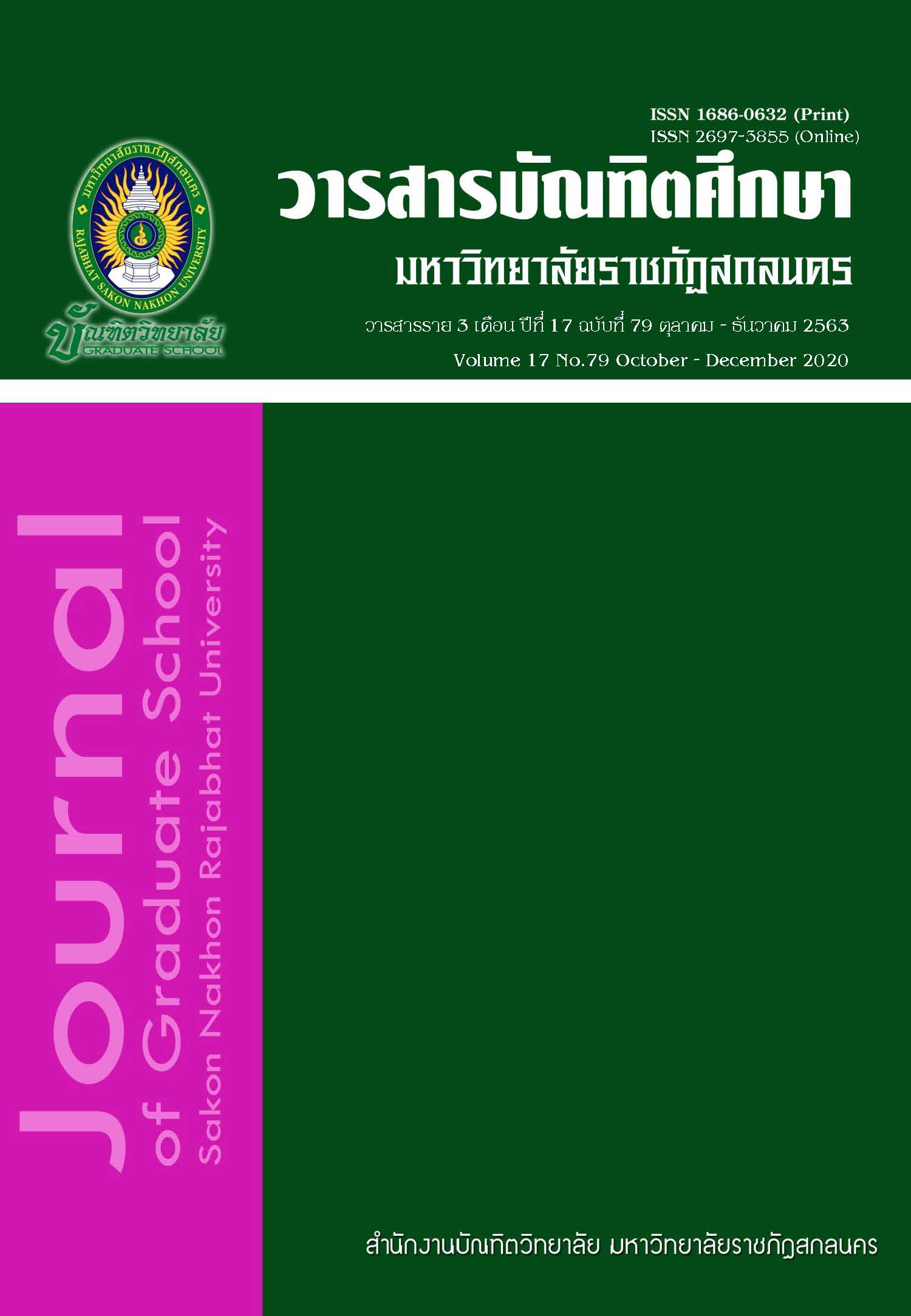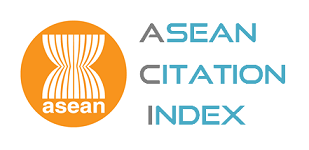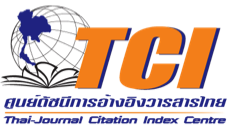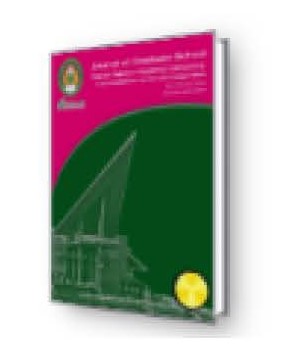ผลการจัดการเรียนรู้แบบการสอนแนะให้รู้คิดร่วมกับเทคนิคคู่ตรวจสอบที่มีต่อผลสัมฤทธิ์ทาง การเรียนคณิตศาสตร์และทักษะการแก้ปัญหาทางคณิตศาสตร์ของนักเรียนชั้นมัธยมศึกษาปีที่ 5
Keywords:
COGNITIVE GUIDED INSTRUCTION WITH TECHNIQUE PAIR CHECKS LEARNING , LEARNING ACHIEVEMENT, PROBLEM SOLVING SKILL , MATHAYOMSUKSA 5 STUDENTS , PROBABILITYAbstract
The purposes of this research were: 1) to compare mathematics learning achievement of students on the topic of Probability before and after being provided cognitively guided instruction with pair checks technique, and 2) to compare mathematics learning achievement of students on the topic of Probability after the intervention with the criteria of 70 percent achievement, 3) to compare mathematical problem-solving skills of students on the topic of Probability before and after the intervention, and 4) to compare mathematical problem-solving skills of students on the topic of Probability after the intervention with the criteria of 70 percent achievement. The samples for this research consisted of 31 students from Mathayomsuksa 5/5 at Piboonbumpen Demonstration School, Burapha University, selected through cluster random sampling. Research instruments were lesson plans, a mathematics achievement test, and a mathematical problem-solving skill test. The statistics for data analysis were mean, percentage, standard deviation, and t-test.
The findings were as follows:
- The student mathematics learning achievement on the topic of Probability after the intervention was higher than that of before at a .05 level of significance.
- The student mathematics learning achievement on the topic of Probability after the intervention was statistically higher than 70 percent criteria at a .05 level of significance.
- The student mathematical problem-solving skills on the topic of Probability after the intervention was higher than those of before at a .05 level of significance.
4. The student mathematical problem-solving skills on the topic of Probability after the intervention was higher than the defined criteria of 70 percent at a .05 level of significance.
References
กระทรวงศึกษาธิการ. (2551). หลักสูตรแกนกลางการศึกษาขั้นพื้นฐานพุทธศักราช 2551. กรุงเทพฯ: ชุมนุมสหกรณ์การเกษตรแห่งประเทศไทย.
กรมวิชาการ กระทรวงศึกษาธิการ. (2551). แนวทางการบริหารจัดการหลักสูตรตามหลักสูตรแกนกลางการศึกษาขั้นพื้นฐาน พุทธศักราช 2551. กรุงเทพฯ: โรงพิมพคุรุสภาลาดพร้าว.
ชัยศักดิ์ ลีลาจรัสกุล. (2543). เอกสารคําสอนรายวิชาหลักสูตรและการสอนคณิตศาสตร์โรงเรียนมัธยมศึกษา. กรุงเทพฯ: คณะศึกษาศาสตร์ มหาวิทยาลัยศรีนครินทรวิโรฒ.
ทิศนา แขมมณี. (2550). ศาสตร์การสอน : องค์ความรู้เพื่อการจัดการกระบวนการเรียนรู้ที่มีประสิทธิภาพ. (พิมพ์ครั้งที่ 2). กรุงเทพฯ: โรงพิมพ์แห่งจุฬาลงกรณ์มหาวิทยาลัย.
นพเก้า ณ พัทลุง. (2550). การพัฒนาหลักสูตร:หลักการและแนวปฏิบัติ. (พิมพ์ครั้งที่ 3). พัทลุง: พิมพ์ลักษณ์.
ปสาส์น กงตาล. (2535). การร่วมมือกันเรียนรู้. วารสารศึกษาศาสตร์มหาวิทยาลัยขอนแก่น, 15(1-2),19.
ผ่องพรรณ ตรัยมงคล และคณะ. (2541). การออกแบบการวิจัย. (พิมพ์ครั้งที่ 2). กรุงเทพฯ: มหาวิทยาลัยเกษตรศาสตร์.
ยุพิน พิพิธกุล. (2530). การสอนคณิตศาสตร์. กรุงเทพฯ: ภาควิชาการมัธยมศึกษา คณะครุศาสตร์ จุฬาลงกรณ์มหาวิทยาลัย.
วิทยากร เชียงกูล. (2562). สภาวะการศึกษาไทย ปี 61-62 ย่ำอยู่กับที่. เข้าถึงได้จาก https://www.dailynews.co.th/education/724398?fbclid=IwAR3CjykixIebbQ2xKUXtXF6gVY6BoUwyFLzKd3-WXjs-8sXXiAJElnTNLZY. 3 พฤศจิกายน 2562.
วิชัย วงษ์ใหญ่. (2542). พลังเรียนรู้ในกระบวนทัศน์ใหม่. กรุงเทพฯ: คณะศึกษาศาสตร์ มหาวิทยาลัยศรีนครินทรวิโรฒ.
เวชฤทธิ์ อังกนะภัทรขจร. (2553). การสอนแนะให้รู้คิด (Cognitively Guided Instruction : CGI) รูปแบบหนึ่งของการจัดการเรียนรู้คณิตศาสตร์. วารสารศึกษาศาตร์/Journal of Education, 21(1), 1-5.
สมบัติ การจนารักพงศ์. (2549). เทคนิคการจัดกจิกรรมการเรียนรู้แบบ 5 E ที่เน้นพัฒนาทักษะการคิดขั้นสูง. กรงุเทพฯ: 21 เซ็นจูรี่.
สถาบันทดสอบทางการศึกษา. (2560). รายงานผลการทดสอบระดับชาติขั้นพื้นฐาน (O-NET) ช่วงชั้นที่ 4 (มัธยมศึกษาปีที่ 6)
ปีการศึกษา 2560. เข้าถึงได้จาก http://niets.or.th. 15 กุมภาพันธ์ 2561.
สถาบันส่งเสริมและพัฒนาการอ่านและเขียนแห่งประเทศไทย. (2547). ๒๙ เทคนิคการจัดกิจกรรม การเรียนรู้ที่หลากหลาย : การเรียนรู้แบบร่วมมือ. กรุงเทพฯ: ธารอักษร.
สถาบันส่งเสริมสอนวิทยาศาสตร์และเทคโนโลยี. (2555). การวัดผลประเมินคณิตศาสตร์. กรุงเทพฯ: ซีเอ็ดยูเคชั่น.
หทัยกานต์ อินบุญมา. (2547). ชุดการเรียนคณิตศาสตร์เพื่อส่งเสริมความรู้สึกเชิงจำนวนเรื่องการประมาณค่า ชั้นมัธยมศึกษาปีที่ 1. ปริญญานิพนธ์ กศ.ม. กรุงเทพฯ: มหาวิทยาลัยศรีนครินทรวิโรฒ.
อัมพร ม้าคนอง. (2553). ทักษะและกระบวนการทางคณิตศาสตร์ : การพัฒนาเพื่อพัฒนาการ. กรุงเทพฯ: จุฬาลงกรณ์มหาวิทยาลัย.
Adams, D.M. & Hamm, M.E. (1990). Cooperative Learning : Critical Thinking and Collaboration across the Curriculum. Illinois: Charles C. Thomas.
Aktivitas, M., & Belajar, D. A. N. P. (2010). Cooperative Learning Type Pair Checks to Improve Activity, Creatiely, and Learning Achievement of Class 11 Students. Available from http://eprints.umm.ac.id/5328/. April 13th, 2018.
Belajar, H., Siswa, M., Viii, K., Wicaksono, W. B., & Veronica, R. B. (2017). The Effectiveness of Cooperative Learning Model of Pair Checks Type on Motivat/ion and Mathematics Learning Outcomes of 8th Grade Junior High School Students. Journal of Mathematics Education, 6(2), 198-204.
Brucker, Leo T and Forester E. Grossnickle. (1974). How to make Arithmatic Meaningful. Philadelphia: John C.Winston.
Carpenter, T.P. et al. (1989). Using Knowledge of Children's Mathematics Thinking in Classroom Teaching: An Experimental Study. American Educational Research Journal, 26(4), 499-531.
Carpenter & Peterson, Carey, D. (1989). Teachers' decision making and cognitively guided instruction: A new paradigm for curriculum development.In facilitating change in mathematics education. Australia: Deakin University Press.
Carpenter, T.P., et al. (2000). Cognitively guided instruction: A research-based teacher professional development
program for elementary school mathematics. National Center for Improving Student Learning and Achievement in Mathematics and Science.
Eggen, P.D., Kauchak, D. P. (2006). Strategies and Models for Teachers Teaching Content and Thinking Skills. (5th ed.). Boston:Pearson Education.
Eggen, P., & Kauchak, D. (2012). Strategies and Models for Teachers: Teaching Content and Thinking Skills. (6th ed.). Boston: Pearson.
Franke, M. L.; & Weishaupt. L. (1998). Using Children’s Thinking to Teach Mathematics. Available form http://www.gseis.ucla.edu/research/uesc.html. December 24th, 2012.
Good, C. V. (1973). Dictionary of education. New York: McGraw-Hill book Company.
Kagan, S. and Kagan, M. (1998). Multiple intelligences. California: Kagan Cooperative Learning.
Kilpatrick, Jeremy; et al. (2001). Adding it up: helping children learn mathematics. Washington D.C.: National Academic Press.
Michels, Manzi and Mele. (2006). Science Science Cooperative learning and Science High School Activities. Australian: Alison Stone, Hawker Brownlow Education.
Prescott, B. A. (1961). Report of Conference on Child Student. Bangkok: Faculty of Education, Chulalongkorn University.
Downloads
Published
How to Cite
Issue
Section
License
บทความทุกบทความที่ตีพิมพ์ในวารสารบัณฑิตศึกษา มหาวิทยาลัยราชภัฏสกลนคร ถือว่าเป็นลิขสิทธิ์ของบัณฑิตวิทยาลัย มหาวิทยาลัยราชภัฏสกลนคร










